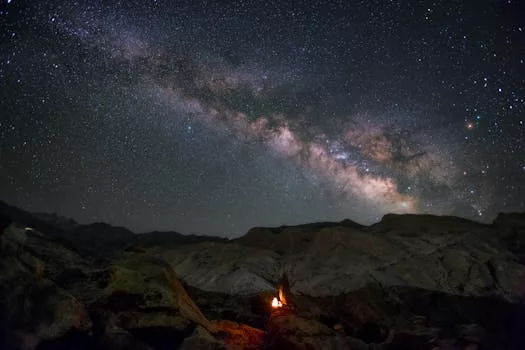
“
Beyond the Milky Way: Imagining New Worlds and Possibilities
Introduction to the Cosmos
Beyond the Milky Way: Imagining New Worlds and Possibilities has been a topic of interest for centuries. The Milky Way is our home galaxy, containing hundreds of billions of stars, including our Sun, and countless other celestial objects. However, it is just one of the many galaxies in the observable universe. The idea of exploring and understanding what lies beyond our galaxy has fascinated scientists, philosophers, and science fiction writers for decades. This article will delve into the possibilities of new worlds beyond the Milky Way and the advancements in space exploration that may one day make it possible to visit them.
Understanding the Universe
To imagine new worlds beyond the Milky Way, we need to understand the structure and evolution of the universe. The universe is made up of billions of galaxies, each containing billions of stars. Galaxies are classified into different types, including spiral, elliptical, and irregular galaxies. Our Milky Way is a spiral galaxy, consisting of a central bulge and a disk of stars, gas, and dust. The universe is also expanding, with galaxies moving away from each other at incredible speeds.
The universe is thought to have begun as a singularity, an infinitely hot and dense point, around 13.8 billion years ago. This singularity expanded rapidly, and as it did, it cooled and formed subatomic particles, atoms, and eventually the stars and galaxies we see today. The universe is still expanding, and this expansion is accelerating due to the presence of dark energy, a mysterious substance that makes up about 68% of the universe’s total energy density.
Exploring the Possibilities
So, what lies beyond the Milky Way? The short answer is that we don’t know for sure. However, based on observations and simulations, scientists have made several predictions about the existence of other galaxies and celestial objects. One of the most exciting areas of research is the search for exoplanets, planets that orbit stars other than our Sun. Thousands of exoplanets have been discovered so far, and many of these planets are believed to be located in the habitable zones of their respective stars, where conditions are suitable for life as we know it. For more on this, check out Beyond Stars: Where Imagination Takes Flight.
Another area of research is the study of dark matter and dark energy. These mysterious substances make up about 95% of the universe’s total mass-energy budget, yet we know very little about them. Understanding dark matter and dark energy could reveal new insights into the nature of the universe and the possibility of other forms of life. For a deeper dive into these concepts, visit Galaxies of Dreams: How Imagination Transcends the Night Sky.
Takeaways
- The Milky Way is just one of the many galaxies in the observable universe.
- The universe is expanding, and this expansion is accelerating due to the presence of dark energy.
- Thousands of exoplanets have been discovered, and many of these planets are believed to be located in the habitable zones of their respective stars.
- Understanding dark matter and dark energy could reveal new insights into the nature of the universe and the possibility of other forms of life.





